Culture and Heritage
Welcome to the Herzegovina Wine Route, where stunning landscapes, unique culture, and world-class wines combine to offer a memorable experience for wine and culture enthusiasts alike.
This picturesque region showcases the best of Bosnia and Herzegovina, from the breathtaking views in Mostar to the historic charm of Trebinje, Ljubuški with the oldest museum in Bosnia and Herzegovina, religious and pilgrimage sites, and UNESCO sites like the Old Bridge and Radimlja necropolis.
The Herzegovina Wine Route is home to a vibrant wine and religious heritage, with iconic places to explore such as the pilgrimage site in Medjugorje, the Tekke in Blagaj, and the monasteries around Trebinje. Other highlights include the Tvrdos Monastery, the Rabi Moša Danon site in Stolac, and the numerous vineyards that dot the landscape. Whether you’re looking to explore the region’s spiritual side or its winemaking traditions, the Herzegovina Wine Route offers a unique insight into the culture and history of the region.
HWR
Culture and Heritage
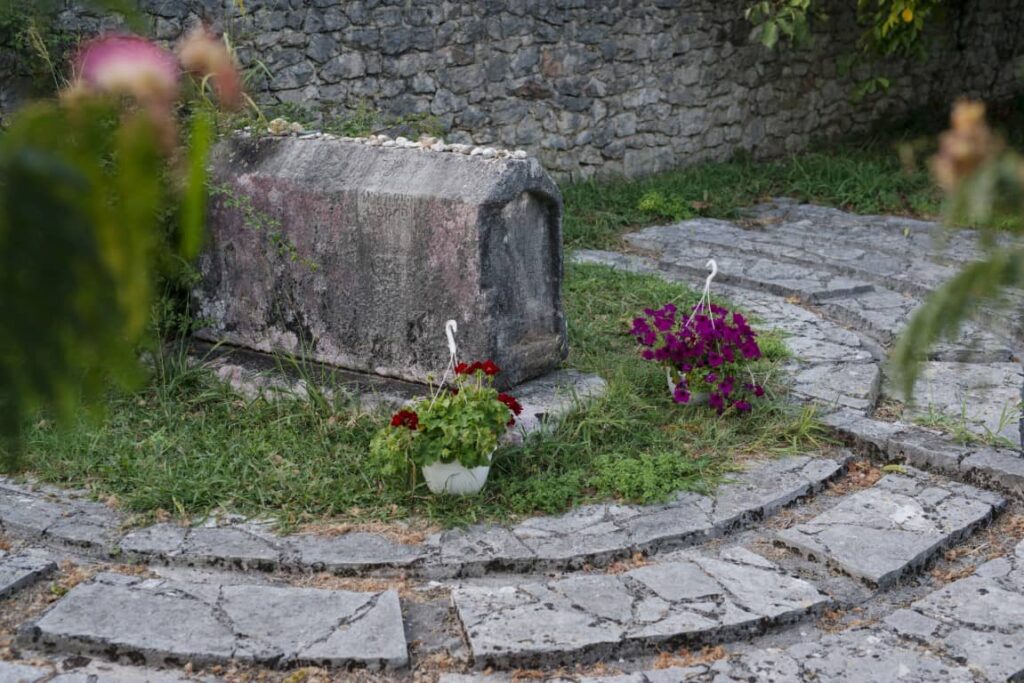
Rav Moshe Danon Burial Site
The grave of Sarajevo rabbi Moshe Danon, situated on the Mostar-Stolac road in Krajšina, holds immense significance for both Bosnia and Herzegovina and the Jewish people. Rabbi Moshe Danon, a respected member of the Jewish community, plays a vital role in Jewish spiritual and material culture. In 1830, he set out on foot to Palestine but passed away near Stolac. His grave, marked by a stone monument resembling the tablets of the Ten Commandments, commemorates his journey and vow.
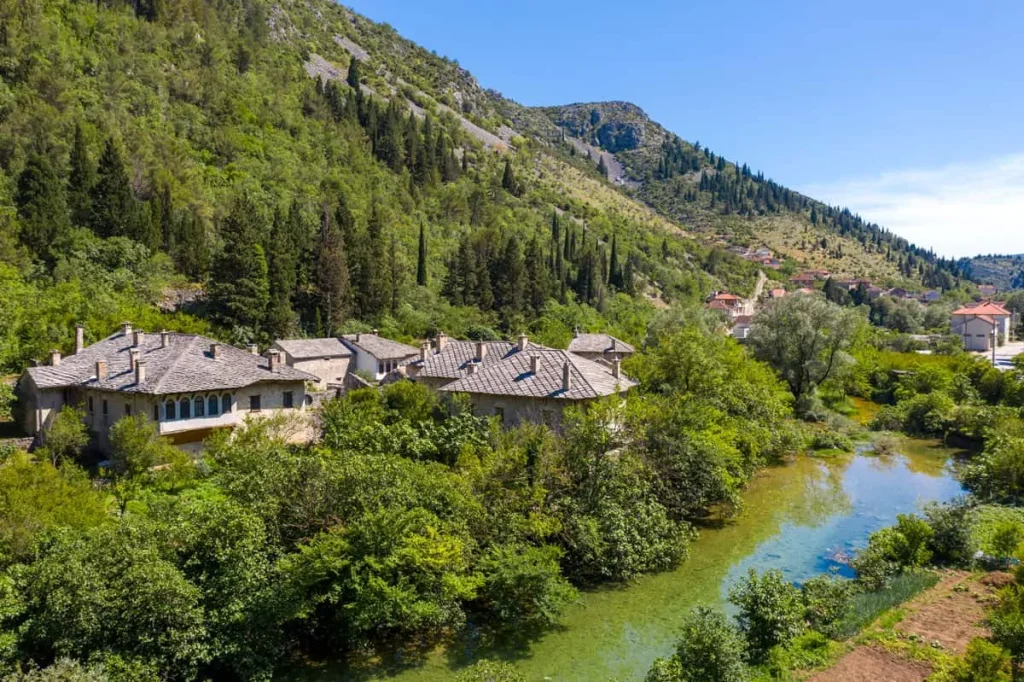
Residential complex Begovina
Begovina, a residential complex in Stolac, was built as an economic entity with inns and gardens, separate from the rest of the city. It shows respect for natural terrain and privacy, forming a protected family territory. Architecturally, it consists of four parts: the public access road, the entrance yard with four buildings, a semi-private courtyard, and a private family house. The complex is surrounded by a high stone wall on three sides, with the Bregava River acting as a natural border on the fourth side. The complex comprises five inn buildings, six residential buildings, and auxiliary structures. Access is from the south side via Ćuprija in Begovina, a stone bridge that connected the Rizvanbegović family houses. The complex is considered one of the most beautiful and significant residential complexes in Bosnia and Herzegovina.
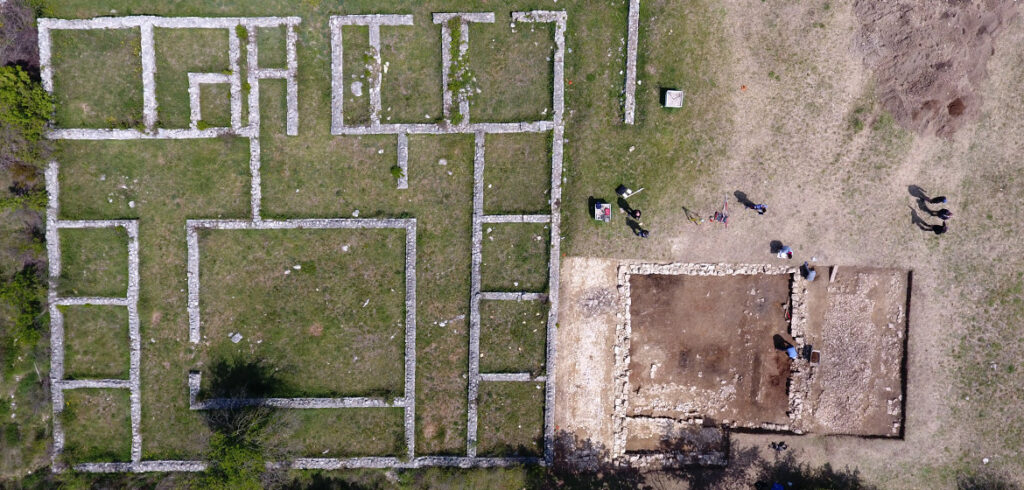
Roman Military Complex in Gračine
The ancient archeological site of Gračine is located on the flat plateau above the left bank of Trebižat River in the area of the village Humac. The military camp originates from 1st-3rd century, and was partially researched and restored in the period from 1977 to 1988. Remains of a Roman military complex have been excavated at the site. Numerous remains of pottery, jugs, vases, coins, jewelry, rings, glass, tools and weapons were found during the excavation. A small part of the exhibits is in the Museum of the Franciscan Monastery of St. Ante, and most of the excavations (ceramics, glass, numismatics) have never been exposed. This archeological site was declared a national monument in 2003.
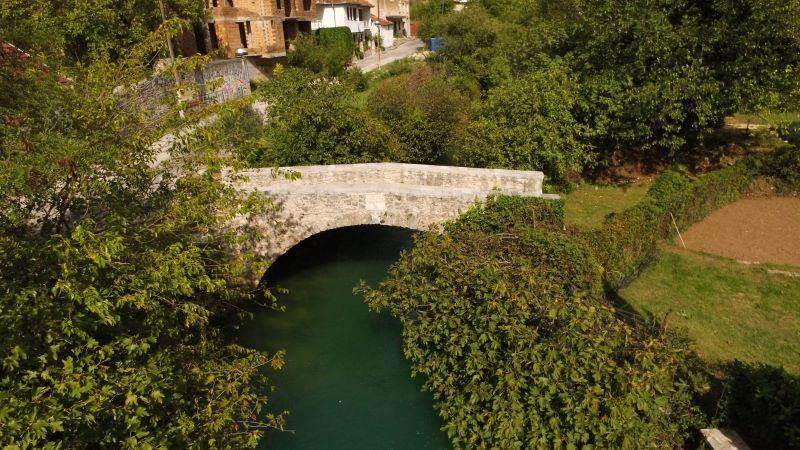
Sara’s Bridge
After the Congress of Berlin in 1878, Bosnia and Herzegovina became part of Austria-Hungary, leading to significant changes in the local social structure. During this period, the Bridge of Sara Kašiković, also known as the Girls’ Bridge, was built in 1896 on the right shore of the river Bregava. The bridge was constructed for private use, connecting a road and gardens on the other side of the river. Its owner, Sara Kašiković, built it as a tribute to her lost love, Salko, whom she could not marry due to religious differences. Sara later built a hotel named Europe on the site where they used to meet.
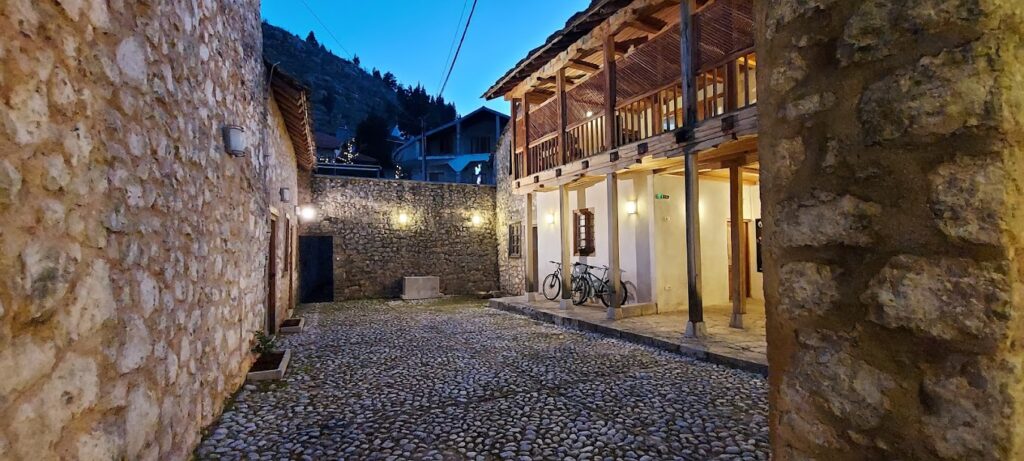
Šarić House – Branko Šotra Gallery
The Šarić House, also known as Branko Šotra Gallery, is situated near Čaršija, the main crossroads of trade and travel in Stolac. Built in 1734/1735, the Šarić family, a prominent Muslim family in the region, was associated with this historical building. Ismail-kapetan, a notable member of the family, contributed significantly to the town’s development by constructing a mosque, school, cistern, and shops. In 1963, the Art Gallery in Sarajevo established its first external branch in Stolac and named it after Branko Šotra, a renowned print artist from the former Yugoslavia, who was born in Stolac. The gallery housed 92 prints donated by Šotra, forming a permanent exhibition. His artwork featured striking black and white contrasts, portraying World War II events in his early works and later shifting focus to Herzegovinian landscapes and people.
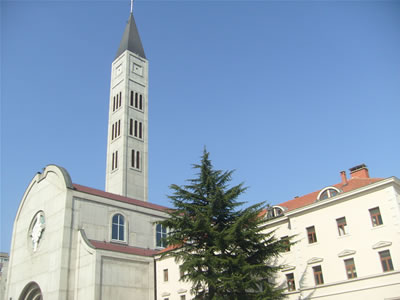
St. Peter and Paul Church
In 1866, the Ottomans played a significant role in the construction of the Catholic church and Franciscan Monastery in Mostar. The Complex takes great pride in its expansive library, housing over 50,000 ancient volumes from both Western and Eastern authors, making it the largest library in Herzegovina. Additionally, the building showcases an important art collection featuring works by Italian Masters from the 16th and 17th centuries. This historical site stands as a testament to the rich cultural exchange and legacy of diverse civilizations coming together in harmony.
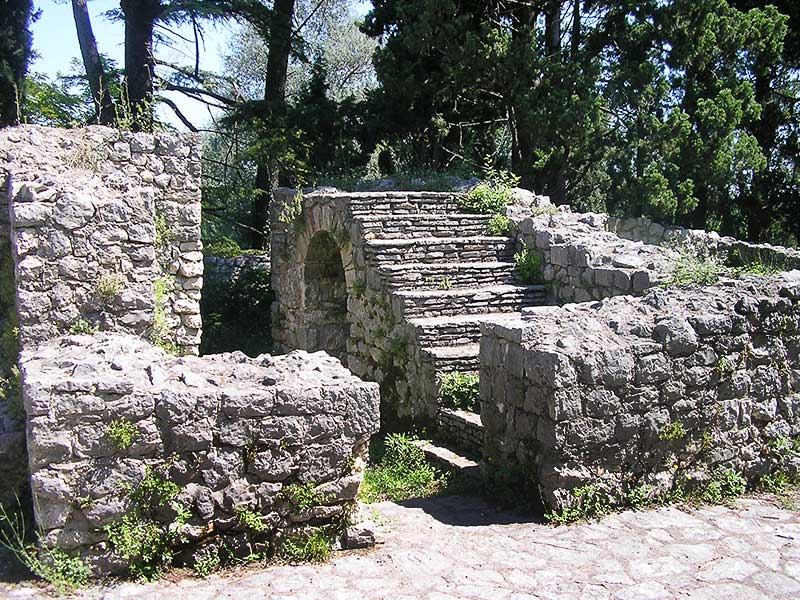
Antique Villa Mogorjelo
Mogorjelo is one of the most important monuments of the Roman era in Bosnia and Herzegovina and belongs to the most beautiful buildings of late antique architecture. Mogorjelo supplied the Roman city of Narona and probably served in the defense of the city and its surrounding, a dense grove of coastal trees (cypress) gives this monument a particularly beautiful frame. The building was excavated between 1889 and 1903, and in the following years it was conserved, being declared as a national monument in 2002.

Apparition Hill and the Blue Cross
Apparition Hill and the Blue Cross in Medjugorje hold profound spiritual significance for millions of pilgrims worldwide. Medjugorje is a renowned pilgrimage site where, since June 1981, six young visionaries have reported regular apparitions of the Virgin Mary. Apparition Hill, or Podbrdo, is the site where the first apparition allegedly occurred, drawing countless devotees seeking solace, healing, and spiritual renewal. On the other hand, the Blue Cross, situated at the base of Apparition Hill, has become a place of intense prayer and reflection, where visitors meditate on the sufferings of Christ and present their intentions to the Virgin Mary. Both sites have become symbols of hope and faith, attracting people from various backgrounds to seek divine encounters and experience the transformative power of Medjugorje’s spiritual atmosphere.

Antique Villa Mogorjelo
Mogorjelo is one of the most important monuments of the Roman era in Bosnia and Herzegovina and belongs to the most beautiful buildings of late antique architecture. Mogorjelo supplied the Roman city of Narona and probably served in the defense of the city and its surrounding, a dense grove of coastal trees (cypress) gives this monument a particularly beautiful frame. The building was excavated between 1889 and 1903, and in the following years it was conserved, being declared as a national monument in 2002.

Apparition Hill and the Blue Cross
Apparition Hill and the Blue Cross in Medjugorje hold profound spiritual significance for millions of pilgrims worldwide. Medjugorje is a renowned pilgrimage site where, since June 1981, six young visionaries have reported regular apparitions of the Virgin Mary. Apparition Hill, or Podbrdo, is the site where the first apparition allegedly occurred, drawing countless devotees seeking solace, healing, and spiritual renewal. On the other hand, the Blue Cross, situated at the base of Apparition Hill, has become a place of intense prayer and reflection, where visitors meditate on the sufferings of Christ and present their intentions to the Virgin Mary. Both sites have become symbols of hope and faith, attracting people from various backgrounds to seek divine encounters and experience the transformative power of Medjugorje’s spiritual atmosphere.

Archaeological site Gabela
Gabela is a national cultural monument of Bosnia and Herzegovina. Due to its strategic location, Gabela was also inhabited in Roman times, from which we have the remains of a brick factory and farm buildings on the outskirts of the town. Of the large number of medieval buildings, the remains of the old fort and a stone plaque with a large winged lion, the symbol of the Republic of Venice, are the most impressive to this day. Gabela was from the 15th to the 18th century a large trading center, but also an important strategic fortress on the Venetian-Turkish border. At one time it was known as the slave square. Various political and economic interests were competing for supremacy over Gabel. The Turks occupied it in 1477, and after several failed attempts in 1694, the Venetians occupied Gabela, then with the Peace of Požarevac in 1718, Gabela belonged to the Turks, and the Venetians demolished all the important buildings. Gabela is again under Turkish administration, but without its former power. During the Austro-Hungarian rule and the construction of the narrow-gauge railway, Gabela was a junction from Sarajevo to Dubrovnik and Metković. The Mexican scientist Roberto Salinas Price developed a hypothesis based on geographical information in the Iliad that the Trojan War was in the valley of the Neretva River, that is, that Gabela was Ilios, the capital of the state of Troy.